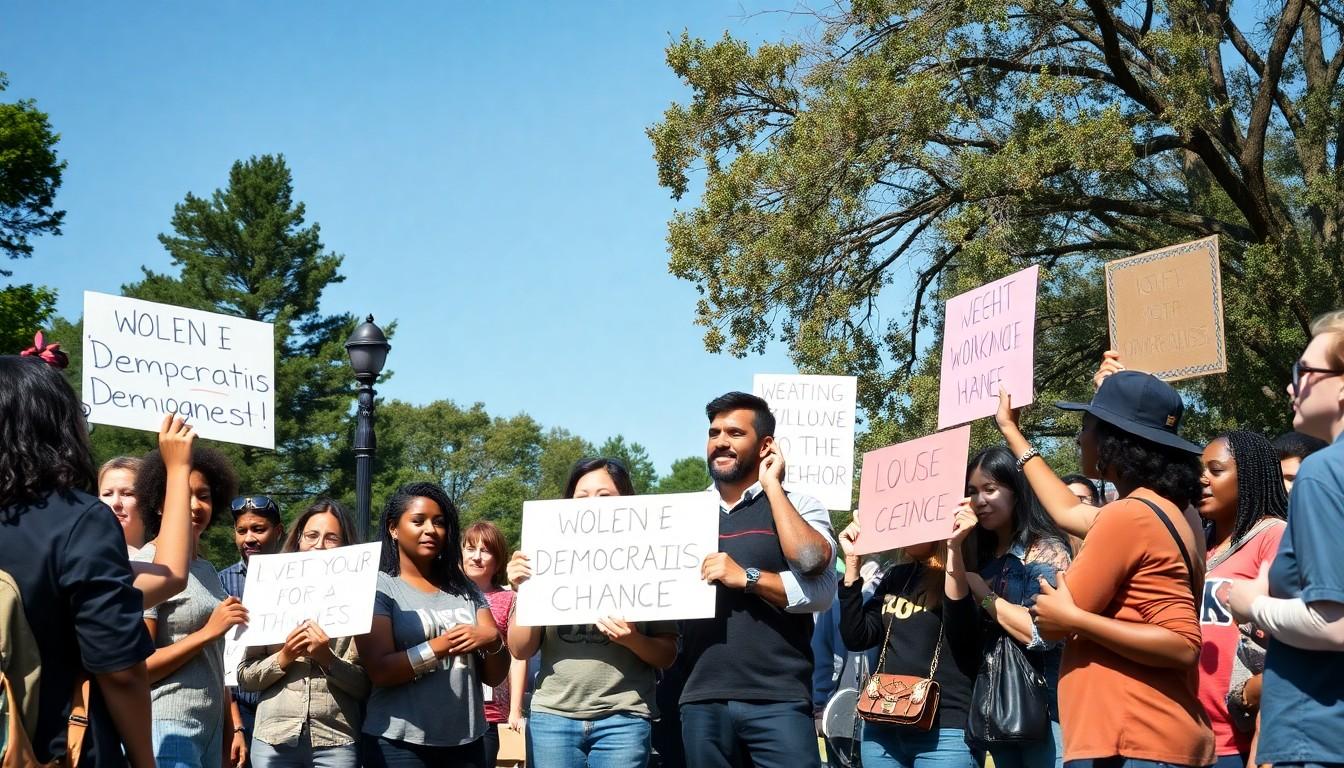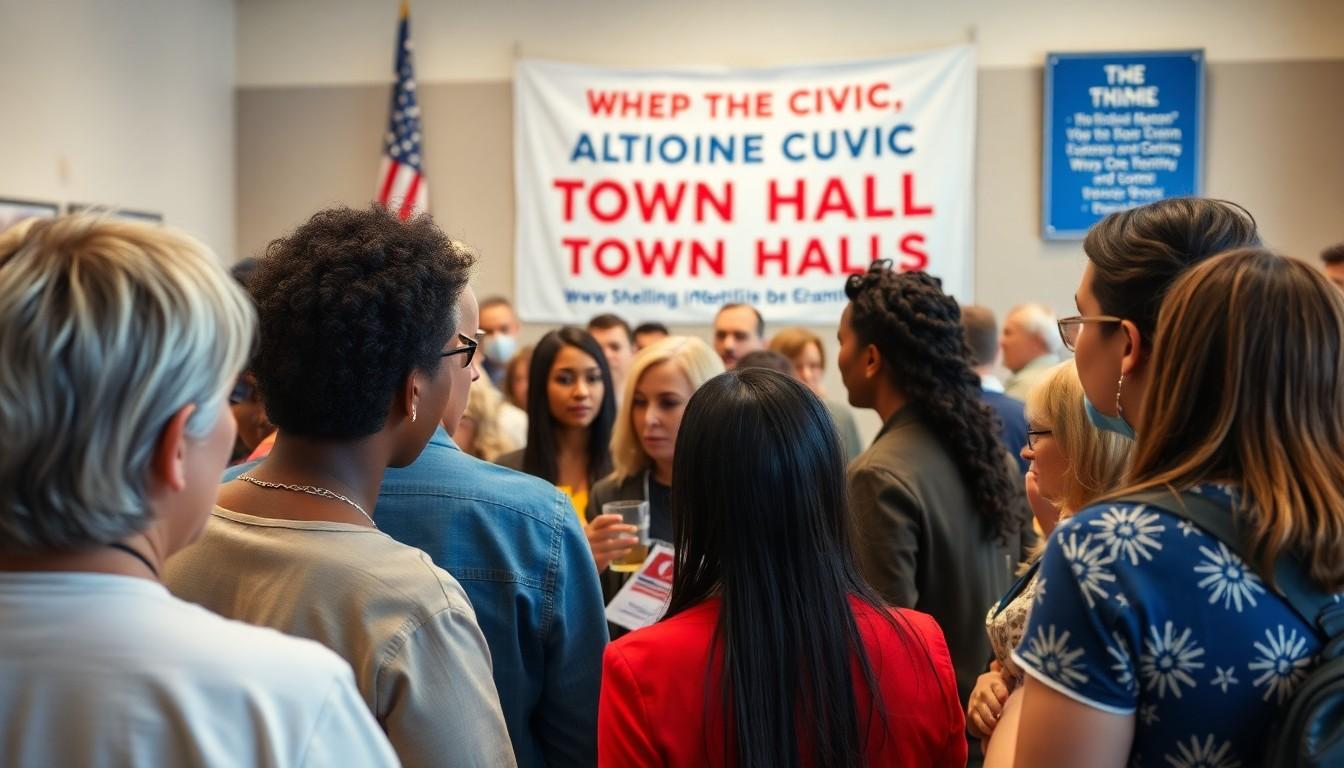Phone:
(701)814-6992
Physical address:
6296 Donnelly Plaza
Ratkeville, Bahamas.

Public opinion isn’t just a buzzword tossed around in political debates; it’s the heartbeat of democracy. It shapes policies, sways elections, and can even make or break a politician’s career. Imagine a world where the government actually listens to its citizens—sounds like a fairy tale, right? Yet, understanding public opinion is crucial for grasping how governments function and respond to the needs of their people.
In this article, he’ll dive into the definition of public opinion and its role in governance. From polls that make headlines to grassroots movements that ignite change, public opinion is a powerful force. So grab your favorite snack and settle in as we explore how this elusive concept influences decision-making in the halls of power—because who wouldn’t want to know what the people really think?
Public opinion reflects the collective attitudes and beliefs of individuals concerning political issues, policies, and leaders. This concept plays a vital role in a democratic society.
Public opinion encompasses the views held by a significant portion of the population regarding social, political, and economic matters. Scholars define it through surveys, polls, and focus groups that capture citizens’ perspectives. This definition acknowledges both the intensity and diversity of opinions across various demographics. It’s crucial to note that public opinion isn’t static; it evolves based on events, media influence, and shifting values.
Governments must consider public opinion to ensure responsiveness to citizens’ needs. This factor informs decision-making and policy formulation. Elected officials often rely on polls to gauge public sentiment on critical issues. Strong public opinion can prompt legislative change or influence election outcomes. Grassroots movements also arise from collective public sentiments, pushing for reforms and accountability. Overall, understanding this concept enhances democratic governance and promotes civic engagement.

Public opinion significantly shapes government actions and decisions. Understanding how it influences policy and reflects democratic values is crucial for effective governance.
Public opinion impacts policy decisions in substantial ways. Elected officials analyze polling data to understand citizens’ preferences and concerns. Strong public sentiment can prompt immediate legislative changes. In recent years, issues like climate change and healthcare reform highlight the responsiveness of policymakers to shifting public perspectives. Advocacy groups often mobilize grassroots support, creating pressure for policy adjustments. Events, media coverage, and social movements also play key roles in shaping public views and thus influencing government actions. Ultimately, public opinion acts as a barometer, guiding leaders in aligning with voters’ needs.
Public opinion embodies the core democratic values of participation and representation. Citizens express their beliefs through surveys, polls, and social media platforms. Government responsiveness to public opinion demonstrates accountability and fosters trust. Diverse opinions across demographics showcase the pluralism inherent in democratic societies. Elected officials who ignore public sentiment risk losing support in future elections. The ongoing dialogue between citizens and government enhances civic engagement, making democracy more robust. This reflection of collective attitudes underscores the importance of integrating public perspectives into the decision-making process.
Public opinion measurement employs various techniques to capture citizens’ views and sentiments. These methods provide insights into the collective mindset regarding political issues.
Surveys represent a prevalent method for gauging public opinion. Polls typically gather quantitative data through structured questionnaires. Sample sizes often range from 1,000 to 2,000 respondents, ensuring statistical reliability. Random sampling enhances representativeness across demographics like age, gender, and geography. Polling organizations utilize various question formats, including open-ended and multiple-choice questions. This diversity helps capture nuanced perspectives. Data analysis methods, such as cross-tabulation, allow researchers to identify trends and correlations between variables. Insights from surveys significantly inform electoral strategies and policy formulation, making them crucial for understanding voter behavior.
Social media platforms serve as modern tools for measuring public opinion. Engagement metrics like likes, shares, and comments reflect public sentiment in real time. Analysis of trending hashtags offers insights into prevailing issues and attitudes. Tools such as sentiment analysis utilize algorithms to assess the emotional tone of social media content. Recent data indicates that over 70% of adults engage with social media, providing a rich pool of opinions. Continuous monitoring of discussions enables governments and organizations to adapt messaging and policies in response to public sentiment. This method complements traditional polling techniques, ensuring a comprehensive understanding of public attitudes.
Interpreting public opinion involves multiple complexities. A significant challenge arises from misinformation and bias.
Misinformation can distort public understanding of issues. Inaccurate information spreads rapidly, particularly through social media. Polls may reflect not just opinion but also the influence of false narratives. Bias in survey questions shapes responses, potentially misleading results. Organizations conducting polls must ensure neutrality to reduce bias. A non-representative sample can skew findings, leading to misinformed policy decisions. Public perception changes when false information permeates discussions, complicating accurate representation of collective views.
Media plays a crucial role in shaping public opinion. Reported stories focus perceptions, framing issues in specific contexts. Selective coverage reinforces particular narratives, influencing how individuals respond to political matters. The rise of social media further complicates the landscape by enabling echo chambers. Users often engage with content reflecting their beliefs, undermining diverse viewpoints. Such dynamics lead to polarized attitudes among the public. Moreover, sensationalized reporting can amplify extreme opinions, skewing the overall perception. Understanding these influences is vital for accurately gauging public sentiment.
Public opinion serves as a crucial element in the functioning of a democratic government. It reflects the collective voice of citizens and shapes the policies that affect their lives. The dynamic nature of public opinion highlights the need for governments to remain attuned to the evolving sentiments of the populace.
As the landscape of communication changes with technology and social media, understanding public opinion becomes even more essential. Elected officials and policymakers must navigate the complexities of public sentiment to ensure their decisions resonate with the needs and values of their constituents. Ultimately, fostering a dialogue between citizens and their government strengthens democracy and promotes accountability.